Dewatering 101 For Hydro Vac Slurry Processing
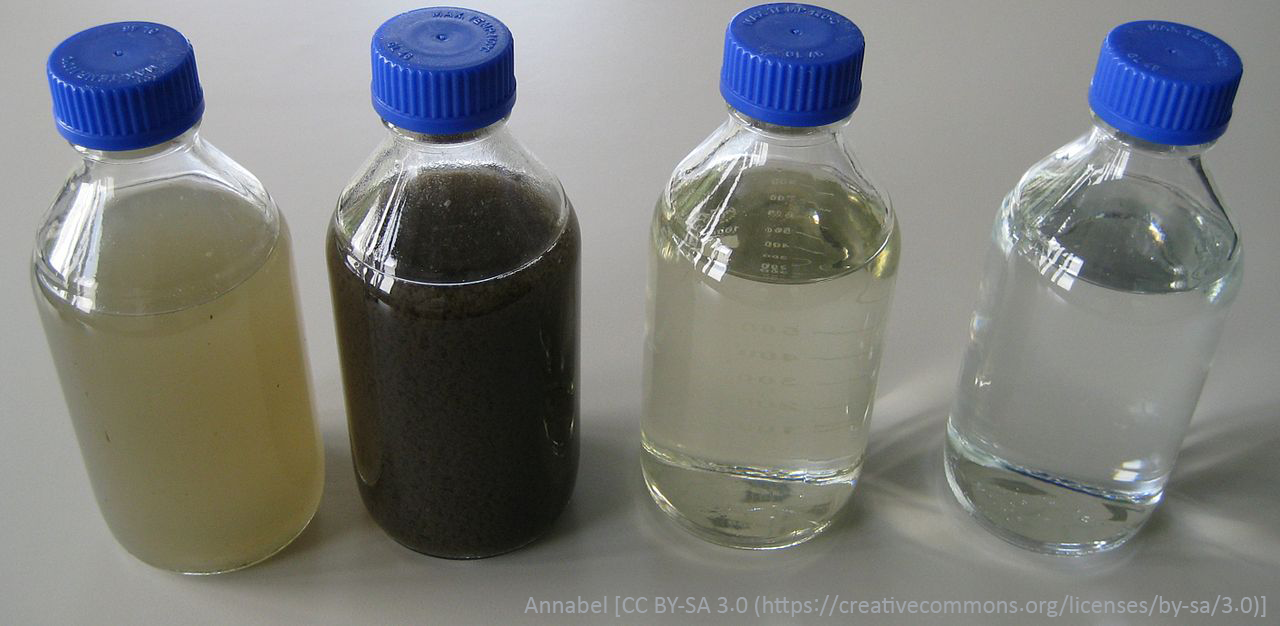
Dewatering, or the removal of water from solid material, is both art and science, and it's a process that can vary from application to application.
In this section, we're going to spend some time outlining a mechanical Hydrovac Slurry Dewatering Process. For each step, we'll describe and explain what needs to be done, why it needs to be done, some of the specific challenges associated with completing each step, and recommendations as to how you can better achieve your desired results.
But before we get into the actual process, let's start with a definition.
Soil Dewatering ...
1) the action of removing groundwater or surface water from a construction site. Normally the dewatering process is done by pumping or evaporation and is usually done before excavation for footings or to lower water table that might be causing problems during excavations.
2) the process of removing water from the soil.
(Juan Rodrigeuz, 2019)
For our purposes, we’re going to focus on the second definition.

In the state of Florida there are a lot of phosphate mines which generate incredible amounts of slurry that need to be dewatered. Florida has over 150 square miles of these ponds, an area that’s about half the size of New York City.
Soil Dewatering systems can be both Mechanical and Non Mechanical in Design and Function. We're going to further define Mechanical Dewatering as continuous processing systems that utilize man made equipment to remove water from soil. Everything else will be considered Non Mechanical, or Conventional Dewatering, which is where we'll start off.
A conventional soil dewatering process will typically be based around some combination of gravity, retention, head pressure, and evaporation. Primary examples of conventional systems would be settling ponds, pits, and enviro or filter bags.
Settling ponds and enviro bags allow the soil and water mixture to basically sit for long periods of time to allow the soil to “settle” out of the water. For Settling Ponds, the strategy is to either let the surface water evaporate off over time, or skim the relatively clean water off the top for re-use or disposal, and allow all the suspended solids to settle to the bottom. Enviro bags allow the water to pass through the bag material overtime, retaining the solid material within the bag. The water that permeates the bag may still have suspended solids present that might still need to be removed through further processing depending on what's being done with the water.
These solutions require all types of area (there are ponds out there that are more than a mile square and over 40 feet deep) and time (the finer, lighter weight material may never settle out).
Settling ponds do fill up with sediment so you either have to dig more ponds or dig out the sediment that forms a wet solid cake at the bottom and figure out what to do with it.
There are three main reasons why the settling process takes so much time.As particle size decreases, so does the particle weight. In the case of clay particles, you also have a large surface area to contend with. The combination of light weight and large surface area makes it very difficult for gravity alone to allow fine particles to settle out.
The finer clay particles found in solution are primarily negatively charged, so they actually repel each other reducing their ability to stick together or come together to form larger particles that would sink to the bottom.
Any type of agitation to the standing water (in bound or out bound pumping, rain, wind, animal, etc.) will stir up the fine particles suspended in the water, causing them to move farther apart and slow their descent to the bottom.
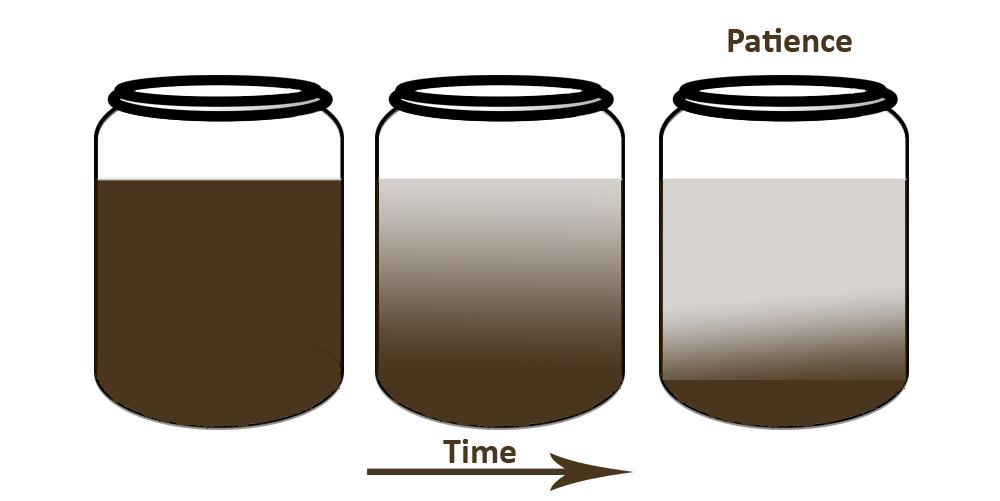
The early years of Hydrovac Slurry Processing have evolved from settling ponds to pits in the ground where the surface water is sucked off and the settled solids are regularly scooped out and mixed with drier material for disposal.
There are two major problems with this approach.
The water that gets sucked off the top is dirty and still needs to be cleaned before you can even dispose of it.
For every unit of wet sludge scooped out of the pit, it takes 3 or 4 scoops of drier material, typically brought in from somewhere else, to mix in so that the solids can be dry enough for disposal. The process basically starts with 1 unit of solid waste and creates a total of 4 or 5 units of total waste through mixing.
Which brings us right back to the dewatering definition… removing water from soil.
For Hydrovac Slurry Processing, we need to change the definition to include 1) how much water we need to remove from the soil, and 2) how clean the water needs to be for reuse or disposal?
Hydrovac Slurry is classified as non-hazardous Liquid Industrial Waste. At the very minimum, dewatering is required to turn it into a solid waste for disposal. A “Slump Test” is the minimum dewatering requirement in many jurisdictions to determine if waste is solid enough for disposal.
A Slump Test is performed by taking a sample of waste and packing it into a cone. The cone is first inverted on a board and then removed. If the waste sample “slumps” more 50% from its original cone shape, it’s considered to be liquid waste and cannot be received at a landfill.
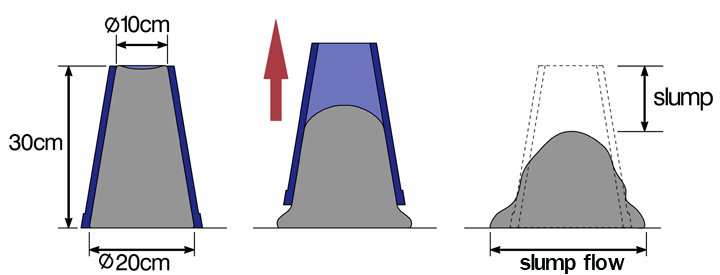
The problem with the Slump Test is that most landfills will not accept material that just passes a Slump Test because the material could still be leaching water which makes it difficult to transport and stack without causing more problems.
A more reasonable standard for hydro excavated material that will be disposed of as a solid waste is that it should pass a Paint Filter Test.
A Paint Filter Test is performed by taking a representative sample of the dewatered solid material and placing it on a paint filter. If any water leaches out of the sample and passes through the filter in a 5 minute period, then the material is still considered liquid waste and cannot be disposed of at most landfill sites.
TSS in Water
There are varying standards from jurisdiction to jurisdiction as to how clean the water needs to be for re-use or release to the storm sewer or run off into the environment. In the province of Ontario, the standard limit for total suspended solids (TSS) in water is 25 ppm which is one of the highest standards around.

With this additional information we can state the following objective for processing Hydro Vac Slurry ...
Hydro Vac Slurry needs to be disposed of at a processing facility that has the ability to dewater the slurry so that processed water can be cleaned to the regulatory requirement for re-use or low cost disposal, and processed solids can be sufficiently dried for either re-use or disposal ...processing to be completed in real time.
Settling Ponds can't do this.
Enviro or Filter Bags can't do this.
Dumping into a Pit can't do this.
Even if any of these could somehow produce the desired results, they couldn't do it in real time and there's way too much Hydro Vac Slurry produced on a daily basis to just be dumped out and left for gravity and time to separate water from the solids.
The only economically viable dewatering option that can solve the stated problem is semi-automated mechanical processing with a chemistry assist. Semi-automated is an important distinction because an effective dewatering process is visual meaning its better to have an operator observe and adjust the system than trying to fully automate it with complex sensing equipment and data analytics that are too difficult to perfect and too costly to implement. The use of chemistry is important to accelerate the separation of water from soil that is necessary to achieve real time processing. ( See Chemistry 101 )
An effective Mechanical Dewatering System for Hydro Vac Slurry receives large volumes of material that is typically different in composition from load to load, that tends to be delivered in batch off loading periods during the day, separates out aggregate and debris, dewaters solids, and cleans water ... all in real time.
For years environmental engineers have designed elaborate settling ponds, enviro bag farms, and even concrete lined pits in the ground to manage ongoing soil dewatering requirements while staying away from mechanical systems either because they couldn’t make them work, or didn’t think they would work. The default approach was more towards simple settling systems that required lots of time and retention to work and few if any moving parts.
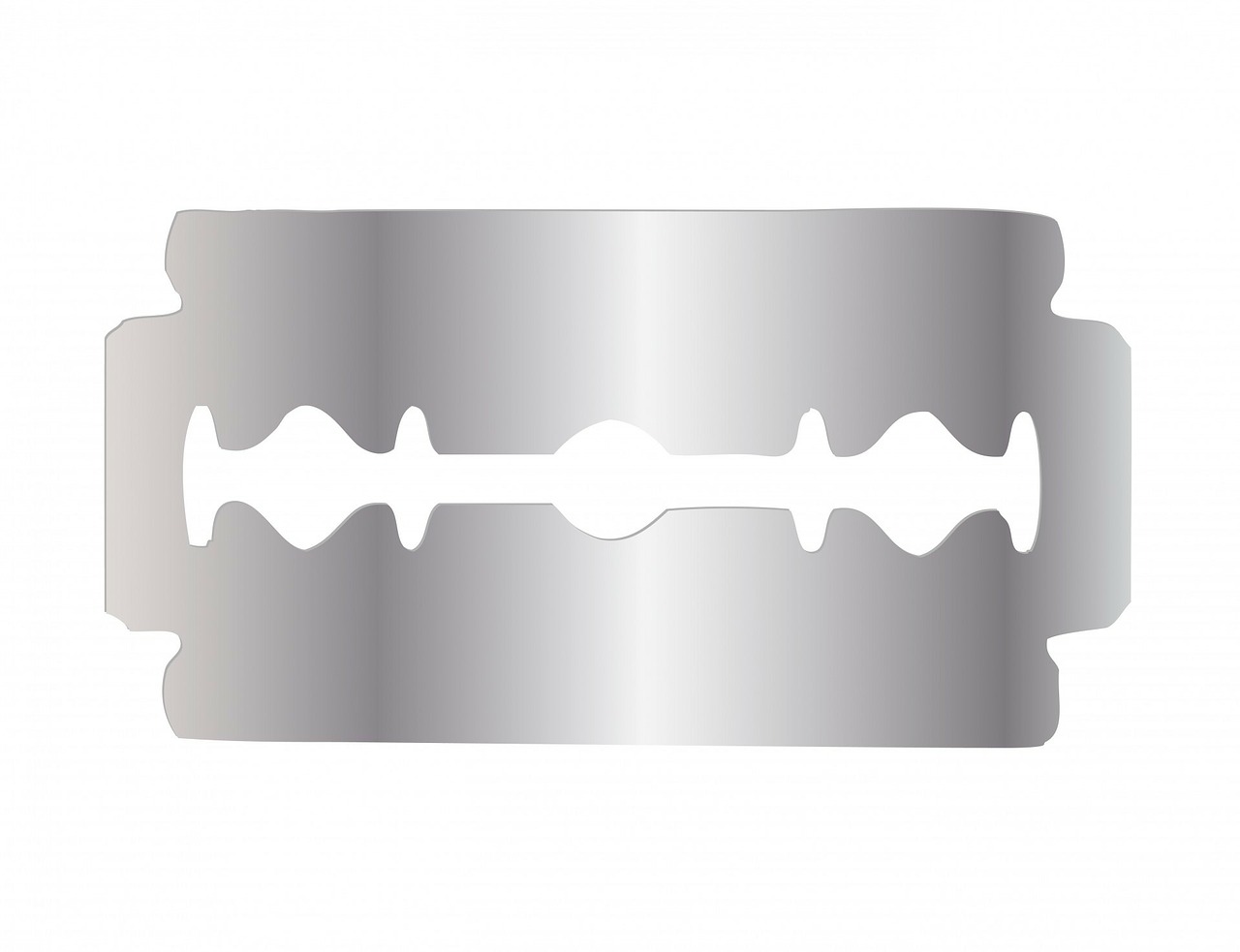
Unfortunately, this seems like a poor example of Occam’s Razor which basically states that all things being equal, the simplest explanation or solution is the correct one.
This principle potentially cuts away, or slices out (like a razor), a whole bunch of compelling conclusions or arguments that could very well help achieve a far better outcome.
This is where Mechanical Processing comes into the picture with more moving parts and steps, collectively capable of consistently delivering a superior outcome.
And even though we use the word “Mechanical” in mechanical processing, its more of a solids control problem than an engineering problem.
Solids control specialists have been mechanically removing water from various solids since before the start of the industrial revolution. With advances in equipment and control systems, dewatering processes continue to improve and tackle the same old problems through continuous improvement, most of which comes from trial and error over time. This is very much why dewatering is both art and science.
So its less about Occum’s Razor and more about asking the right question to the right person to get the best answer.
Material Processing for any particular application in any industry is going to fall under some standard definitions including ...
- 1) a systematic series of actions directed to some end;
2) a continuous action, operation, or series of changes taking place in a definite manner;
3) to treat or prepare by some particular series of actions.
Dictionary.com - Process industries are those industries where the primary production processes are either continuous, or occur on a batch of materials that is indistinguishable. Examples of the process industries include food, beverages, chemicals, pharmaceuticals, petroleum, ceramics, base metals, coal, plastics, rubber, textiles, tobacco, wood and wood products, paper and paper products, etc.
Iise.org
Whether you're baking cakes, bottling drinks, or making dishes, you're going to be following a process. The process will involve a number of steps starting with taking inputs into a process and ending with generating a desired, consistent output. The process is going to be either a continuous or batch format.
For Hydrovac Slurry Processing, a relevant mechanical processing system must also adhere to these same definitions and statements plus a few more including...
To produce a consistent cake, plate, or beverage, you require consistent input. If the ingredients are not consistent, neither will be the output unless the ingredients can be made consistent. With Hydrovac Slurry, the material composition of every load is potentially different (inconsistent input). Yet we still need to consistently produce clean enough water and dry enough solids (consistent output) in real time.
Primary production processes are designed to be "Either" continuous or batch based. Hydrovac Slurry processing plants need to be designed to operate as "Both" a continuous flow and batch processing system to accommodate the receiving gaps that occur during a typical operating day.
Expanding even further, let's go back to the first set of processing definitions listed above and focus on #3, "to treat or prepare by some particular series of actions". A relevant mechanical processing system will perform actions in one step that prepares or conditions material or inputs for the next step, with each progressive step building off the last until the entire processing requirement has been completed.
For Hydrovac Slurry processing, each step conditions the remaining slurry material for the next step. The particular steps to be taken, and the specific conditioning to be performed, is critical to the end results you're trying to achieve.
This is precisely why some slurry processing systems are more effective than others.
Hydrovac Slurry Processing System Outline
Also keep in mind that the primary processing objective of any Hydrovac Slurry Processing System is to receive a mixture of aggregate, soil, debris, and water, screen out the larger sized material, prepare the remaining soil/water mixture for separation, and remove water from soil.
The basic processing steps are ...
- Receiving
- Screening
- Incorporating Chemistry
- Agglomeration & Separation
- Polishing
As mentioned above, each step needs to condition the slurry so that it is properly prepared for the next step. The processing requirements and challenges encountered at each step, and recommends for proper step completion, are as follows ...

Step #1 - Receiving
The most difficult step in the entire process is the actual removal of the suspended solids from the slurry. A close second is the receiving of slurry material for processing. This is where most dewatering systems out right fail before they even get started.
Conditioning Requirement:
1) Removal of large material and debris from the Slurry. 2) Regulation of water content to promote downstream material movement and processing..
Challenges:
1) High variability in material composition from one load to the next. This includes the amount of water in each load as water is the critical element in the entire process flow.
2) Immediate settling of heavier material into the receiving tank or pit causing build up that must be regularly removed. In many systems this has to be done manually and on a daily basis.
3) The presence of large diameter material that can plug up and damage handling equipment. Anything that can be sucked up an 8 inch hose can end up in your receiving tank or pit.
4) The plastic characteristics of Clay that cause it to stick to walls and build up at the bottom of the receiving system.
5) Pumping heavy, dense material can plug up pumps and burn out motors.
Recommendations:
1) Focus on proper receiving tank design in terms of size, shape, and structural composition.
2) Install material handling equipment capable of dealing with variations in material weight, shape, and texture.
3) Develop control systems that allow for effective operator control over material receiving and material movement into the rest of the system.

Step #2 - Screening
Conditioned Slurry from Step #1 is transported to Step #2 where the solid material is further screened out of the slurry so that the remaining suspected solids can be dewatered.
The good news about material screening is that there’s lots and lots of excellent screening equipment on the market to choose from. For the bad news, see Challenges below ...
Conditioning Requirement:
Removal of the larger remaining solid material. This can be done in sequential screening stages, depending on 1) the amount of screening separations desired for re-use or disposal; 2) the maximum allowable particle size in the down stream soil dewatering stage which can range from 3/4 of an inch to 200 microns or smaller depending on your processing setup.
Challenges:
1) it’s very easy to overbuild your screening requirements, creating additional capital cost, operating cost, and operating complexity to manage.
2) At $500 to $800 a screen, not only is the replacement cost of shaker screens significant, but wire mess or polypropylene screens can also get coated (or blinded) with drilling fluid polymers which can be a common ingredient in a Hydrovac Slurry mixture. When Screens get blinded they stop doing their job which impacts the downstream processing. When Screens break they also immediately fail to do their job and it can be minutes or hours before blinding or a break gets detected and eliminated. Between screen failure and repair, the system was not functioning properly which means it wasn’t likely generating clean enough water or dry enough solids.
3) More shakers also mean more pumps, more shaker pans, more labour, more controls, and more things that can go wrong.
Recommendations:
1) Screening should be set up to be as simple as possible while still providing the amount of screening required. Where possible, screening decks should be outfitted with high wear material that is low maintenance, are difficult to “blind”, and rarely need replacing. Some customization may be required if you're using off the shelf equipment.
2) Where possible, initial system setup should incorporate a screening system that is designed for 100% solid material disposal while at the same time monitoring material received for several months to determine the number and types of separations required for long term operation and full material reuse. The Initial screening set up should be designed to allow for future modification and separation expansion.

Step #3 - Incorporating Chemistry
Suspended solids, or colloids, due to their weight, surface area, and charge, may never settle out of water. In order to consistently remove them in a real time processing system, a small amount of chemistry needs to be incorporated.
Conditioning Requirement:
1) Harden the water in the slurry by evenly mixing in an acceptable coagulant in order to neutralize the suspended solid charge and formation of micro flocs).
2) Prepare an Ionic Biodegradable polymer with fresh water, mixing, and sheering to optimize the surface area of the polymer chains.
3) Thoroughly mix a small about of Ionic polymer to allow for sufficient bridging and binding of micro flocs into larger particle groupings (Flocculation).
Challenges:
1. Slurry that is not highly fluid in terms of its ability to freely flow and be easily pumped will have a difficult time effectively incorporating chemistry.
2. Coagulation needs to be completed before Flocculation. Process flows that attempt to do both at the same time, or have too small or too large of a time gap between Coagulation and Flocculation, can be less effective.
3. A lack of proper polymer conditioning prior to injection into the slurry will result in poor uncoiling and shearing of the polymer chains, reducing the polymer's overall surface area and exposure to a greater number of separate particles.
4. Adding too much polymer to the slurry will create an undesirable haze or film in the water that can negatively impact re-use of the water outside of the system, and "blind screens" if the cleaned water is re-used inside the system.
5. Too little properly conditioned polymer added to the slurry will produce less effective Flocculation and, therefore, a higher level of suspended solids will remain in the cleaned water.
Recommendations:
1. Select polymer mixing, injection, and control equipment that meet your polymer hydration and sheering requirements and that can accurately inject the right amount of polymer into the right place in process flow.
2. For both Coagulation and Flocculation, a) maintain a sufficient water level in the slurry for proper chemistry incorporation, b) provide adequate mixing speed and processing time, c) maintain and monitor chemistry levels.
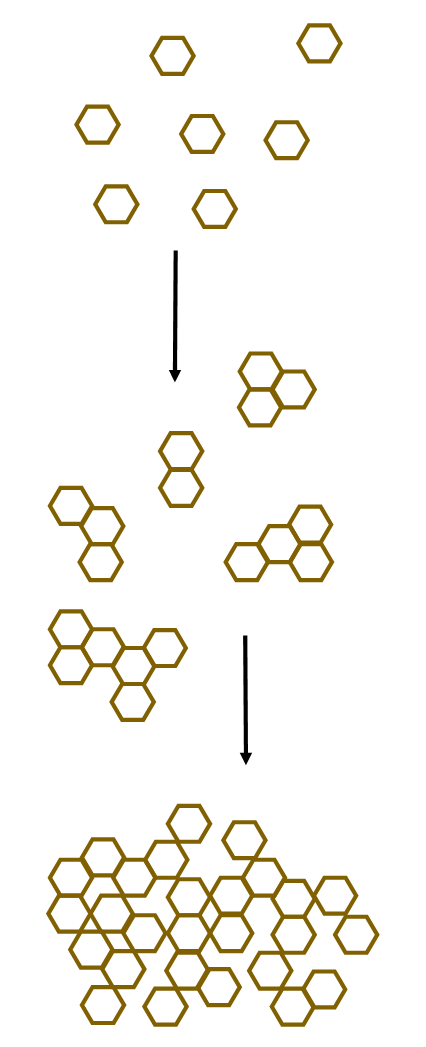
Step #4 - Agglomeration and Separation
Soil and organic matter have the ability to stick to each other and to other surfaces (agglomerate) which produces larger particles with higher mass. The force of gravity can more readily cause these larger particles to settle out of a solution as compared to smaller particles with smaller mass. Coagulation and Flocculation accelerate Agglomeration through the introduction of chemistry to the process flow.
In a mechanical processing system, the goal is to accelerate agglomeration once chemistry is properly added and mixed into the slurry. During this step, the opportunity exists to both clean the water and dewater the solids
Conditioning Requirements:
1. Remove a high percentage of the remaining suspended Solids from the water.
2. Partially dewater the separated solids.
Challenges:
1. Excessive Turbulent flow will further breakdown the suspended solids into smaller particles with smaller mass, making it more difficult for them to settle out.
2. Short retention time in the process will reduce the overall level of Agglomeration that can be achieved with proper Coagulation and Flocculation.
3. Effectively cleaning water and drying solids at the same time is an enormous challenge for most mechanical systems.
Recommendations:
1. Convert the Turbulent Flow coming into this Processing Step into Laminar Flow.
2. Incorporate slurry Rise Rate, Length, and Frequency in the material flow.
3. Create as much Retention (or Detention) time as you can manage.
4. Place obstructions in the flow path to increase particle collisions.
5. Focus on cleaning the water and preparing solids for additional Polishing in Step #5.

Step #5 - Polishing
The final step in a Mechanical Hydrovac Slurry Processing System is the polishing, or further removal, of water from soil and/or soil from water.
Conditioning Requirements:
1. Removal of additional suspended solids from the water in order to stay within the guidelines for Total Suspended Solids (TSS).
2. Remove additional water from the separated solids that may be necessary to pass a Paint Filter Test, or a soil re-use requirement.
Challenges:
1. It's difficult to polish both water and solids at the same time without falling short of the desired outcome for one or both.
2. Polishing effectiveness is often limited by a lack of proper water and/or solids conditioning from the previous step or steps.
Recommendations:
1. Establishment of separate water polishing (removal of solids from water) and solids polishing (removal of water from solids) in the processing system. Note: The entire system needs to be designed to accommodate, condition for, and feed a dual polishing set up.
2. Optimize the use of laminar flow, static head pressure, and retention time for both water polishing and solids polishing.
Soil Dewatering is a Semi - Automated Visual Process
Earlier on in this section, it was mentioned that a mechanical soil dewatering system should be semi-automated to support this highly visual process.
Let's expand on this further.
A certain level of automation is recommended to move, condition, and process received slurry into cleaned water and dried solids. Managing all the processing steps manually is not practical if you expect to be able to consistently achieve your desired results. At the same time, there is also a point where too much automation is also going to be counter productive.
The "too much" part relates to having the automated system continuously analyze the slurry composition and processed discharge, and then make its own processing adjustments on the fly to further reduce human error and increase output consistency. In theory, that type of approach can have a lot of merit in either a continuous flow or batch processing system where consistent inputs are processed into consistent outputs and where process variation is easy to automatically detect and correct.
With Hydrovac Slurry Processing, the input is not consistent and your processing plant needs to be able to work as both a continuous flow or batch processing system when required. As a result, its not practical for electronic measuring equipment to create useful feed back loops to a programmed logic controller for full system regulation. In order for that to work, there would always need to be time between multi variable measurement and any corresponding adjustment for that degree of automation to work properly. That would be extremely difficult, if not impossible to cost effectively program and build into a real time slurry processing flow because of too many interrelated variables constantly changing.
The inconsistent material input and the start/stop nature of slurry processing in a typical day requires enough system automation to partially homogenize the slurry for solids removal and enough operator control to adjust the system based on visual observation of the processed water and solids. Depending on your overall system design, semi-automation can be set up to manage approximately 90% of all the potential material processing variations. The remaining 10% is far easier to control manually than systematically because of the visual nature of the process.
An operator can quickly observe, assess, adjust, and observe. The more Retention Time that is built into the system, the more time the operator will have to observe, assess, adjust, and observe. This gets back to soil dewatering being both art and science.
Semi-automation not only provides great operational control and results, it also can dramatically reduce your labour costs as manually operated slurry processing systems handling any amount of significant volume can be very labour intensive.
Soil Dewatering With Repurposed Equipment
We would be remiss to complete this section without talking a bit more about soil watering system design, specifically related to repurposing of existing equipment.
It is a common misconception that you can just take existing material separation equipment and create an effective Hydrovac Slurry Processing System. While this may be possible, its not probable for many of the reasons we have outlined above.
Remember that the five processing steps we've previously outlined are going to be required by any system designed to accomplish the following...
Hydrovac Slurry needs to be disposed of at a processing facility that has the ability to dewater the slurry so that processed water can be cleaned to the regulatory requirement and processed solids can be sufficiently dried for either re-use or disposal ...processing to be completed in real time.
Re-purposed equipment, no matter the make, model, cost, quality, or durability, will need to work seamlessly together in order to adequately accomplish the requirements of each of these steps, sequentially completed in real time...this is possible, but not consistently probable when only utilizing standard dewatering equipment.
Soil Dewatering is art and science. It's also nothing new, but Hydrovac Slurry Processing is, relatively speaking.
And like any dewatering application, some customization is required to create a working system capable of consistently operating and generating the desired results.
To find out more, click here to send us an email with any questions you may have.
